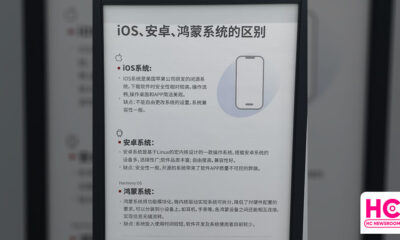Android
Google Android 13 reportedly restricts sideloading of apps
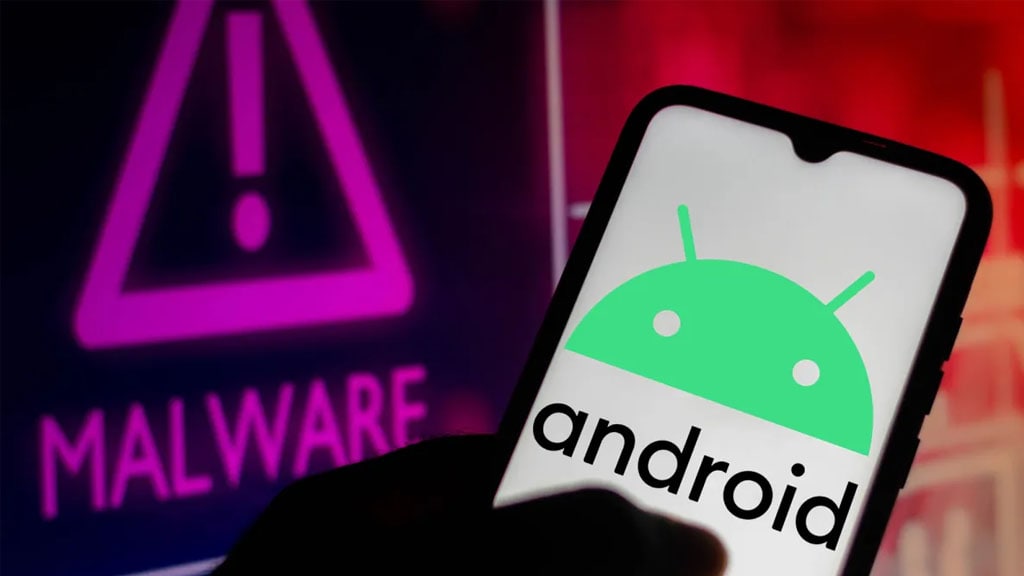
Google is making efforts to break down the path of apps sideloading with the newest Android 13 operating system. By doing so, the company will mark a full stop on all the ways that grant access to some accessibilities services.
According to the reports, Android 13 has initiated a new move for sideloading apps. As a result, it will become difficult for the users to install the applications outside of the official Play Store. However, Google defines a big reason for taking this step.
The reason behind this Restriction:
When a user performs any task out of the legal platform, it gives rise to several risks for the system. Google explains that when an individual installs any application from an APK file, it opens the gate for various phishing attacks and malware to enter the device. Thus, it becomes very easy for spammers to hack the internal system and read confidential matters.

Users can still use Accessibility Services
Although the US manufacturer is trying to shield the privacy of its users, it hadn’t closed the access completely. Individuals still have a choice to sideload the applications. Users can enable or disable the dialog box question for the restricted apps accordingly. Further, users can activate the access in the “allow restricted settings”.
A notable point that appears here is that Google is only making restrictions over the sideloading apps with Andriod 13. However, other fields like F-Droid and Amazon Stores would not show any such prohibition while installing such stuff.
The changes in these regulations might take place in the time ahead with a stable release of Android 13. But for now, the company is strongly denying the allowance of sideloading apps. One can see this ultimate variation with the call recording applications.
(Source)
Android
First Android 14 Developer Beta announced, launch around HarmonyOS 4

Android 14 is the next software version for the Android ecosystem. On February 8, Google stepped ahead to begin the development of this major upgrade with the first developer beta.
Google has released the roadmap for the development, beta testing, platform stability, and the final release of Android 14, which reveals meet the launch of Huawei HarmonyOS 4 later in the second half of 2023.
The first developer preview is already out for the Pixel devices. However, Google could open early access to other smartphone makers such as OnePlus by April when the open beta campaign kicks off.
As mentioned by the Android company, Android 14 is projected to reach platform stability by the end of July. But there’s still a possibility of these milestone timelines to delay, similar to last year.

For your information, the Android 14 developer preview will be a very useful and early gift to the developer community. It will pave a way for the app devs to know more about the upcoming APIs and app features ahead of the final launch.
Looking into the developer preview features, Android 14 promises to improve productivity, enhances performance, improvements to security, and privacy, and bring new customizations.
Yes, there are new tweaks and changes made over Android 12, while there are more that will be visible as the development progress further. Throughout this phase, these developers (and later users) will help to fix bugs and make improvements to the Android 14 source code.
HarmonyOS 4:
Aside from the Android 14 developer beta, Huawei is preparing for the HarmonyOS 3.1 rollout but the company is working on HarmonyOS 4 as a major release for the next generation of Huawei devices. For now, there’s no official launch date available but we are likely to hear more on this at the Huawei Developer Conference (HDC) 2023 event.
HarmonyOS 4 promises big upgrades over HarmonyOS 3 and a major restructure in the user interface (UI). Nonetheless, we’ll keep you posted.

(source – Android)
Android
Despite being an Android babyface, Samsung failed to understand dynamic theme in 2022
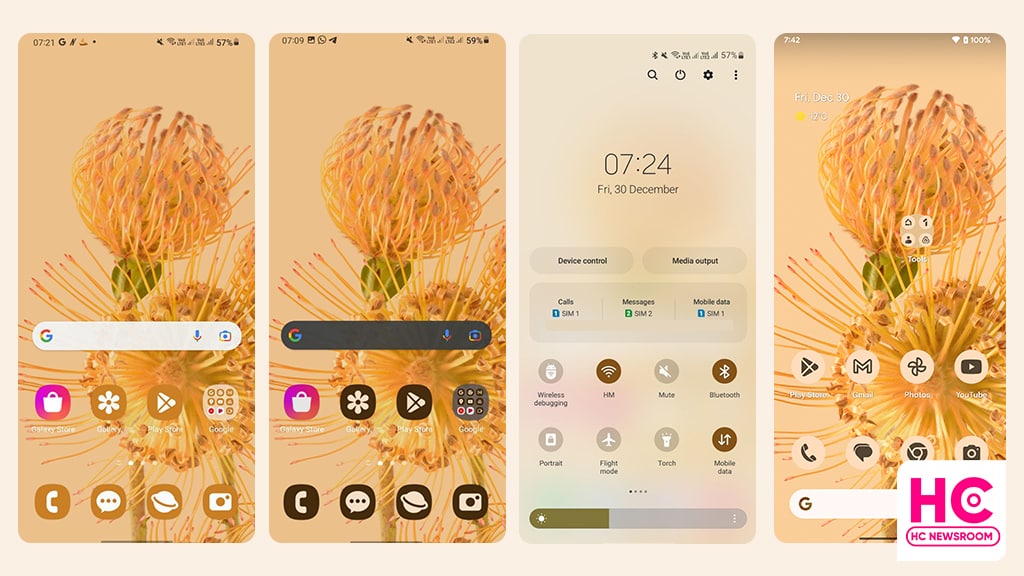
2022 is the year of Android 13 and Android phone makers spotted sending this software update with improved dynamic theme options, but as a babyface, it seems like Samsung still has not learned the core concepts of the dynamic theme.
Introduced with Android 12, the Material You powered dyanamic theme brings brand new settings to tweak the user interface. Instead of being just a feature, the dynamic theme became a part of Android’s soul. With Android 13, Google further polished the dynamic theme so it could be adapted to all Android devices.
Dynamic Theme (Simple version): Once you apply a new wallpaper, the phone generates a range of colors based on that wallpaper. The set of colors is called a color palette and it is then applied throughout the user interface.
Following the decline of Huawei, Samsung is enjoying unlimited Android prowess. It’s projected as a major Android promoter and a babyface. And why not? After all, the South Korean phone maker keeps on posting new mobile shipment records.
However, the handling of the dynamic theme in One UI 5 (which is based on Android 13) shows that Samsung wasn’t serious about being an Android babyface in 2022.
You may want to know, how I reached this conclusion and why Samsung is a failure when it comes to precise work. Let’s find out together.
Appearance:
The user interface is all about appearance, and so does the dynamic theme. Using the dynamic theme on Samsung One UI 5 is different from stock Android 13.
Note: I’ve used the same pixel wallpaper on both Samsung and Pixel devices. So, we can keep the comparison on the same level.
Home Screen:
Below is the home screen, which looks as usual on both One UI 5 and stock Android 13.
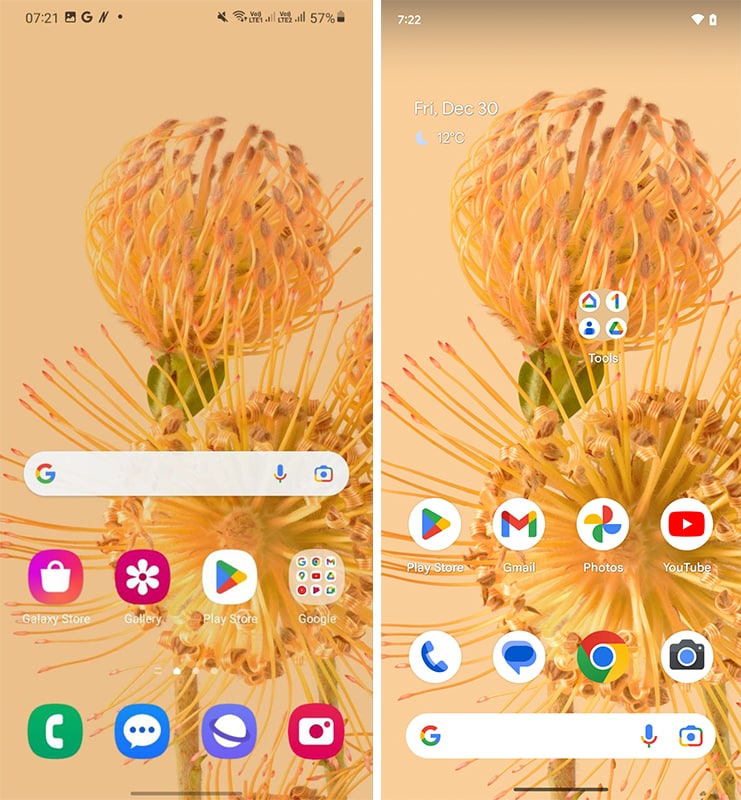
Quick Settings:
Both of the quick settings are using Material You in elements, such as quick access icons and sliders. However, the background on stock Android 13 is solid and remains black. On the other hand, Samsung uses a translucent background in the quick settings, which has not changed even with the Android 13. It is Samsung’s way of implementing features. While in some scenarios, this way obstructs the viewing experience.
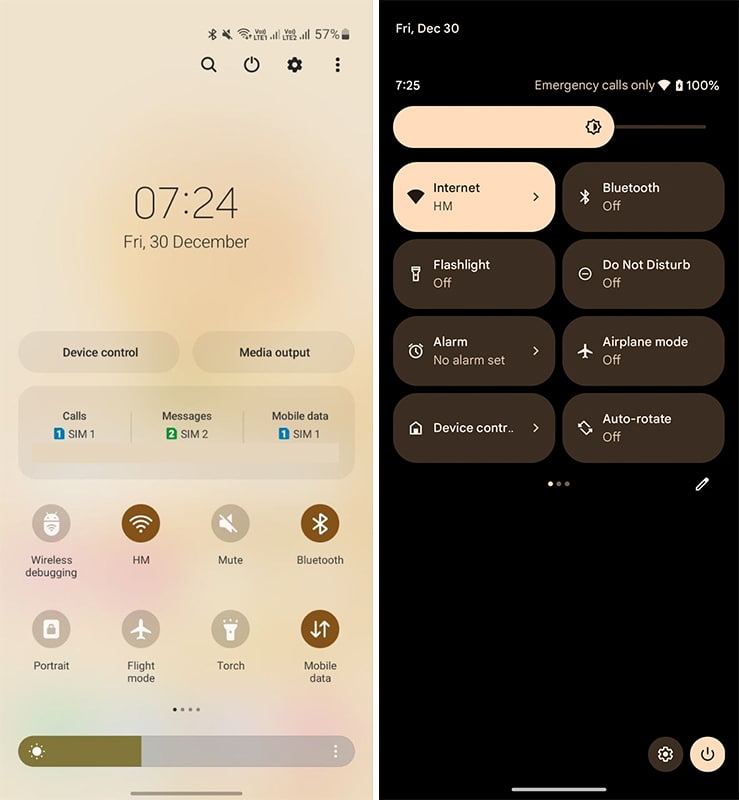
For example, the translucent background is now reflecting the colors of the app opened in the background. It also compromises the look and feel of the quick settings icons and the whole quick settings UI. But it becomes subtle when used on top of the Settings menu.
Below you can check the example of the quick settings opened over the following screens.
(Left – on top of home screen wallpaper, on top of Play Store, on top of Settings menu).
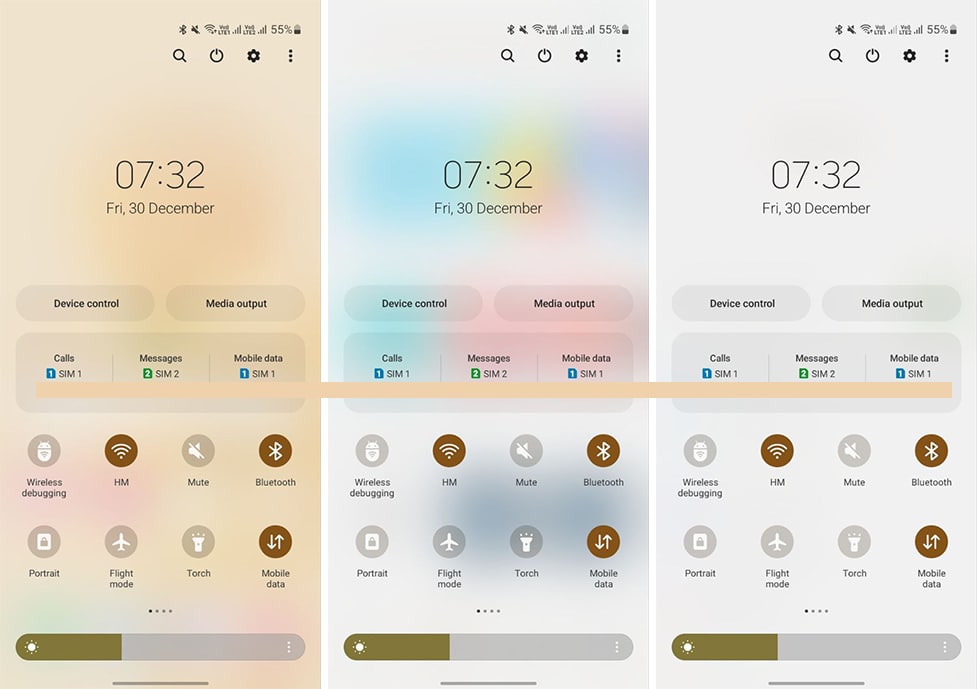
Settings:
The setting is an important part of UI, which we access at least once a day. The layout, font, and elements are different in these two softwares. But Samsung used a slight proportion of the color palette in the Settings’ background and remain neutral for applying to the rest of the user interface.
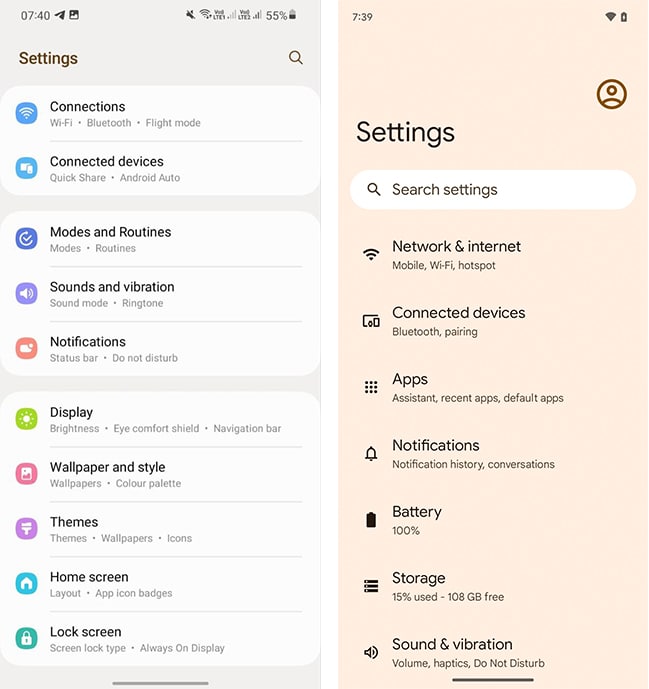
Themed Icons:
I love themed icons because it brings a new look to the app icons. However, Samsung’s way of doing things is a little more disappointing than what it actually looks.
Below you can check Samsung One UI icons painted with color pallets alongside stock android icons. The use and management of contrast in the background and tint on the shape (size too) are super lazy on One UI app icons.
On the flip side, stock Android gets these things done in the best way possible.
![]()
There’s further inspection on this available, apply Dark Mode and see the change.
![]()
Verdict:
We don’t need to explain the results. But It is certainly not nice to implement the dynamic theme for the Android babyface Samsung in 2022.
What could’ve happened?
If possible, Samsung should’ve to blend more into the material rather than bleed into the material. Improve icons, and check visibility levels of the UI elements and the current issues may resolve to an extent.
Android
MagicOS 7/Android 13 beta rolling out for Honor phones
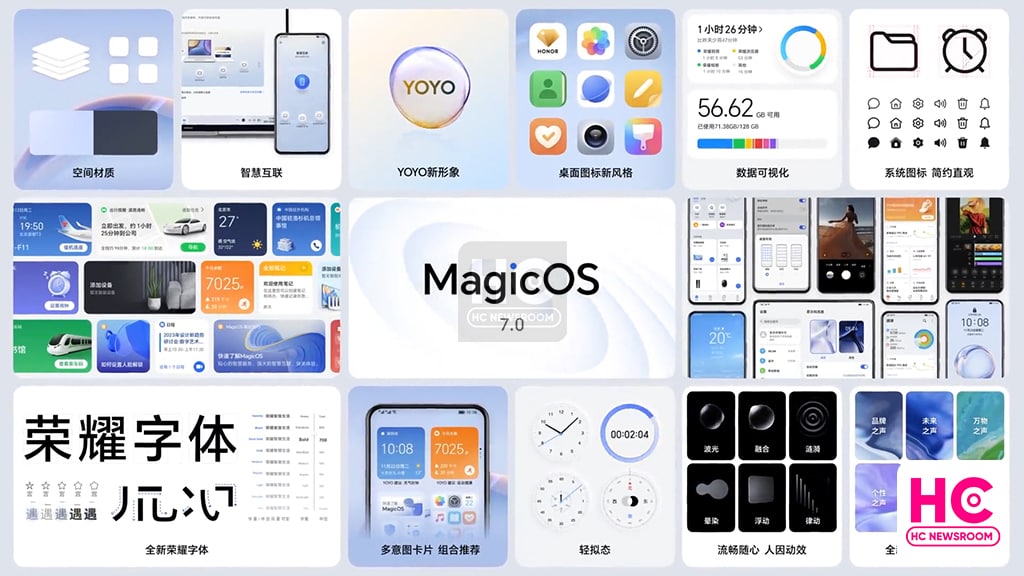
Last month, Honor announced Android 13 based MagicOS 7 and its beta is now rolling out for several models. The rollout is confirmed on various models mentioned in the official roadmap.
According to the information, Honor MagicOS 7 is released for closed beta testers and selected participants will move to public beta in the next phase. After completing the beta test, Honor will send stable MagicOS 7.
Let’s look into the models and their corresponding Honor MagicOS 7/Android 13 beta versions:
Honor Magic V:
The phone is receiving MagicOS 7.0.0.101 upgrading from Magic UI 6.0.0.185.
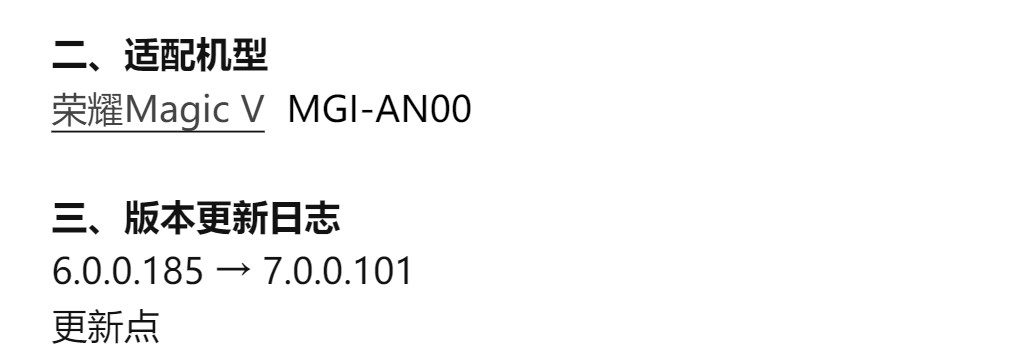
Honor Magic 3 Series:
Honor Magic 3, Magic 3 Pro, and Magic 3 Supreme Edition are receiving MagicOS 7.0.0.107 upgrading from Magic UI 6.0.0.139.
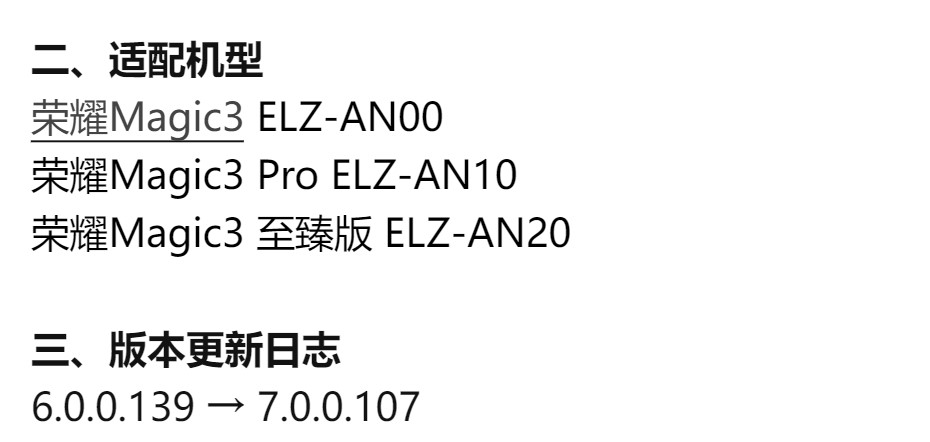
Honor Magic 4 Series:
Honor Magic 4, Magic 4 Pro, and Magic 4 Supreme Edition getting MagicOS 7 version 7.0.0.108 version upgrading from Magic UI 6.0.0.178.
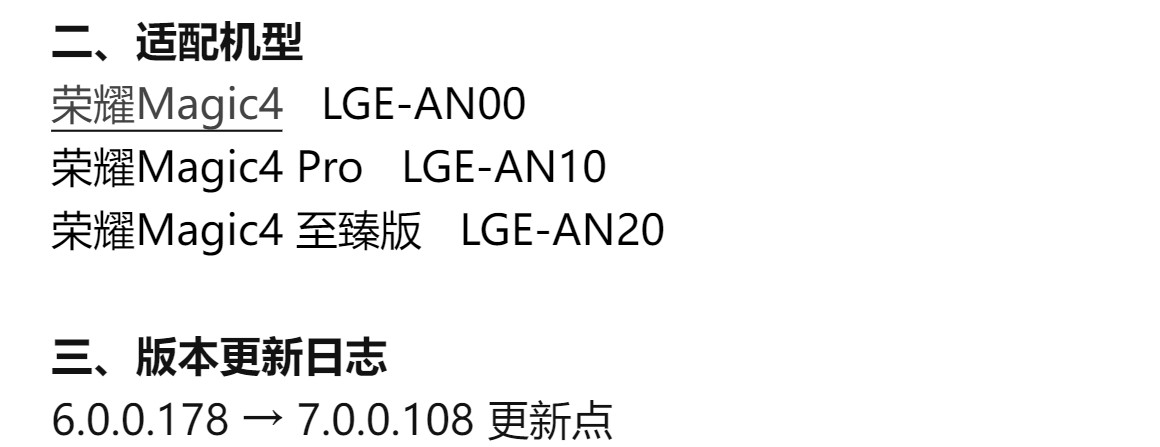
Honor V40:
Honor V40 series is also eligible to download MagicOS 7 closed beta with version 7.0.0.121 users will have to download Magic UI 4.0.0.201 and 205 to participate in the beta activity.
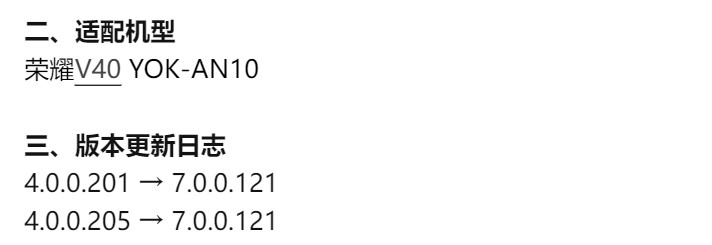
MagicOS 7:
Honor MagicOS 7.0 is a people-centered intelligent interconnection ecosystem, it continues to improve AI Services. The software is also released with a personalized OS, protects privacy and security proactively, and updated the accessibility operation.
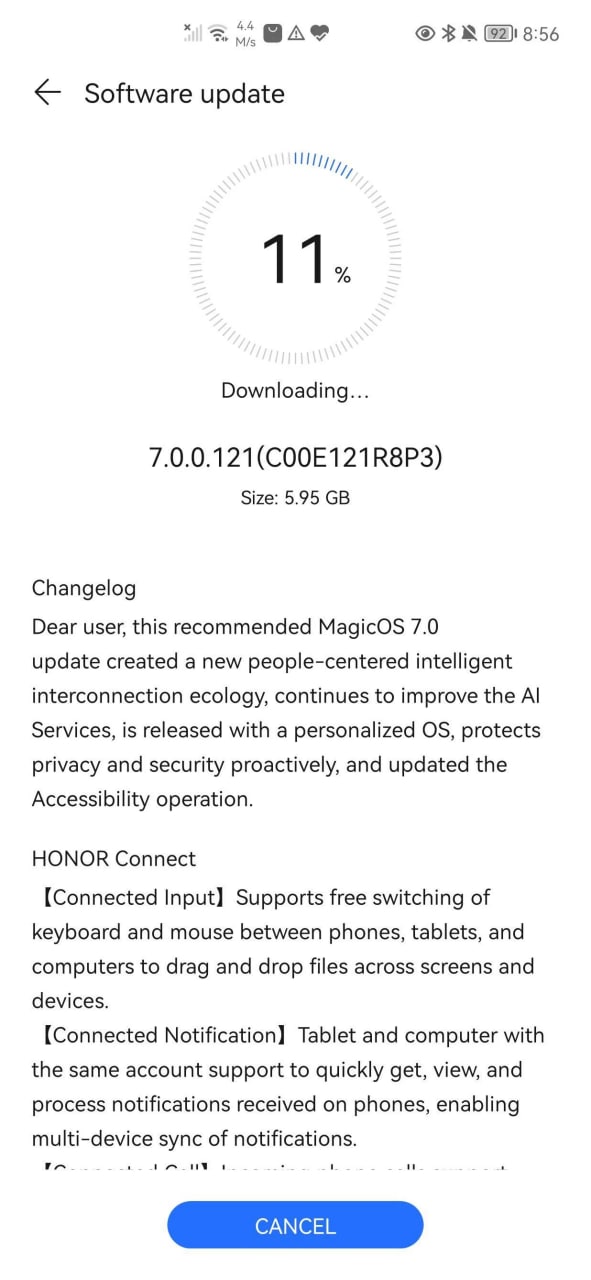
Beta:
It’s noted that the active rollout is spreading as Log and Nolog software packages.
Global:
Currently, Honor is conducting these beta activities in China and it may soon open for global users of these devices.
Notes:
- All of the eligible Honor smartphone owners must have to download the required firmware version before upgrading to MagicOS 7 closed beta.
- During the closed beta testing, users are recommended to join the software user experience improvement program. You can report or suggest features to support closed beta testing environments.
- This software update won’t erase your data but it’s recommended for you to make a backup of important files.
- Users are suggested to update system apps to meet the compatibility.

